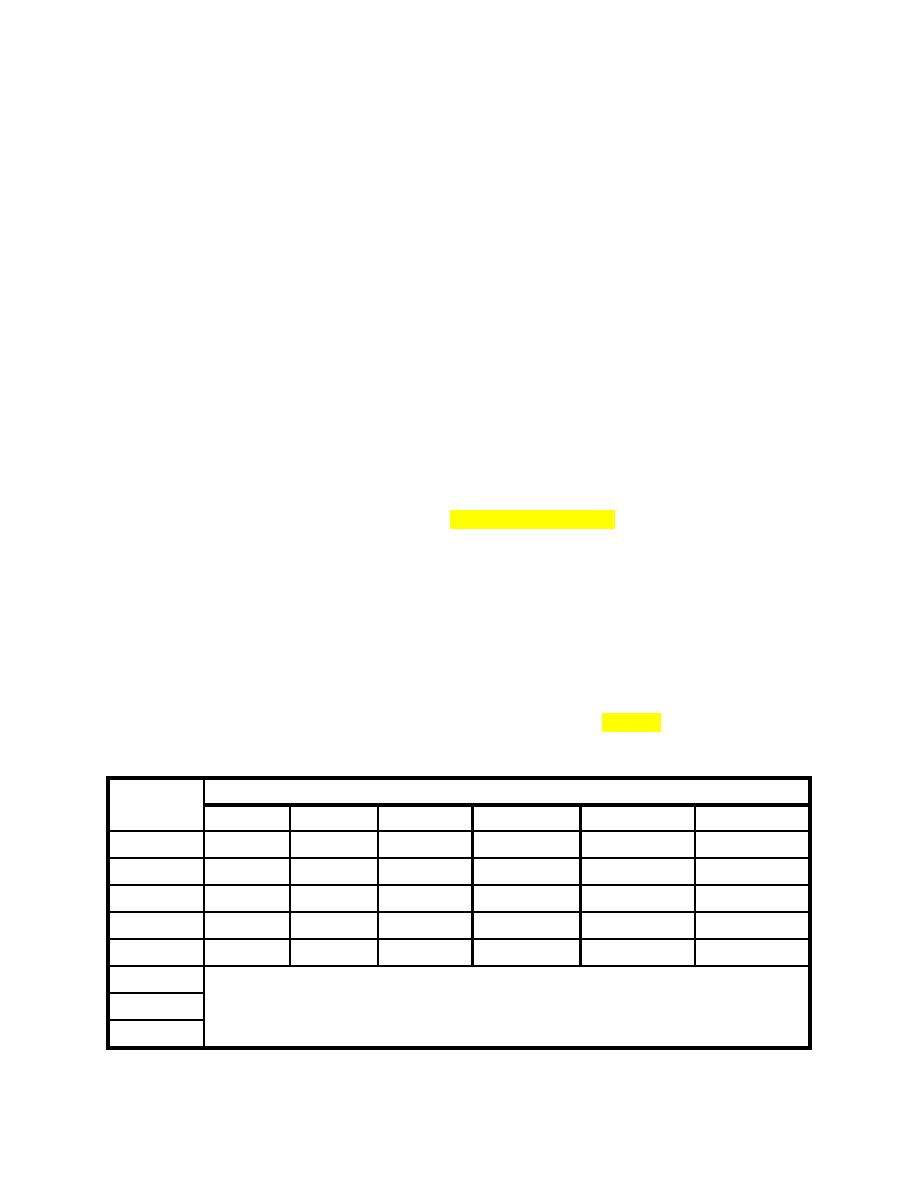
CEMP-E
TI 850-02
AFMAN 32-1125(I)
1 MARCH 2000
c. Geometric Layout.
(1) The ideal crossing geometry is a 90-degree intersection of the track and road (for best sight
angles) with slight ascending grades on the road approaches. Drainage should be away from the track to
reduce the flow of surface water toward the crossing.
(2) Avoid locating crossings near road intersections.
(3) Avoid locating crossings within either a road or railroad curve. These sites typically result in poor
sight warning distances and in conflicting super-elevations that often lead to long-term maintenance
problems and poor performance of the crossing.
(4) Where the road and railroad cannot cross at right angles, the angle should be kept to 60 degrees
or greater whenever practical. For angles less than 60 degrees additional warning or crossing protection
should be considered.
d. Crossing Surfaces and Flangeways.
(1) Table 7-1 lists 10 standard crossing types. Figures 7-1 through 7-10 show cross sections and
design details, These designs are described below along with some recommendations for their
application and their limitations. It should be noted that, even for the most expensive crossing surfaces,
the cost of rebuilding the track (especially when new rail is installed) and the road approaches is usually
more than the purchase and installation cost of the crossing surface itself. Thus, especially where road
traffic volume is significant, where significant numbers of heavy trucks pass over the crossing, or where
vehicle speeds exceed 25 mph, the main cost variable will probably be the expected durability of the
crossing.
(2) Table 7-1. This table is a starting point for matching a crossing surface with traffic requirements.
The descriptions of the crossing surfaces below will help focus on the most appropriate choices. The
Road/Street classes (A through F) and Traffic Categories (I through VII) in table 7-1 are those from TM 5-
822-2/AFM 88-7, chapter 5. The entries in the table are the codes for the suggested crossing surfaces.
Table 7-1. Recommended Crossing Surfaces
Road/Street Class
Traffic
A
B
C
D
E
F
Category
I
4A, 4B, 5
4A, 4B, 5
2, 4A, 4B, 5
2, 3B, 3C, 3D
2, 3A, 3B, 3C, 3D
1, 2, 3A
II
4A, 4B, 5
4A, 4B, 5
4A, 4B, 5
2, 3B, 3C, 3D
2, 3B, 3C, 3D
1, 2, 3A
III
4A, 4B, 5
4A, 4B, 5
4A, 4B, 5
4A, 4B, 5
2, 3B, 3C, 3D
1, 2, 3A
IV
4A, 4B
4A, 4B
4A, 4B, 5
4A, 4B, 5
2, 3B, 3C, 3D
2, 3B, 3C, 3D
IV-A
4A, 4B, 4C
4A, 4B,4C
4A, 4B,4C
4A, 4B
4A, 4B
2, 3B, 3C, 3D
V
4A, 4B,4C
VI
VII
7-2



 Previous Page
Previous Page
